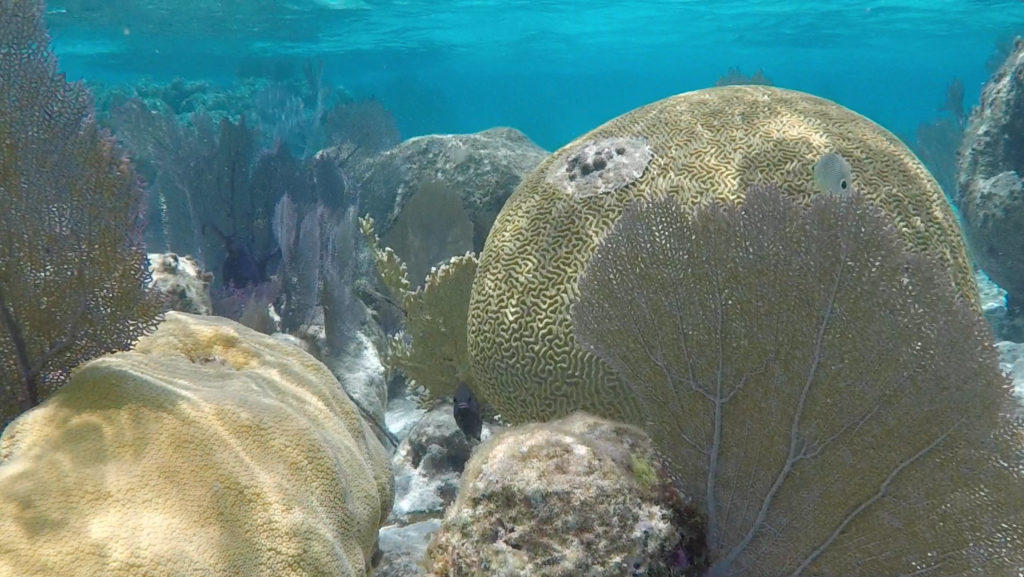Brain Coral

Brain coral is a type of stony coral belonging to the family Faviidae, known for its distinctive grooved and ridged surface that resembles the folds of a human brain. Found in the shallow warm-water reefs across Lighthouse Reef, this type of coral plays a crucial role in building and maintaining coral reefs. Its hard, calcium carbonate skeleton provides structural support for the reef, creating habitats for countless marine species. It can live for hundreds of years, growing slowly while forming large dome-like structures. These corals host symbiotic algae called zooxanthellae, which provide the coral with energy through photosynthesis, while the coral offers the algae a protected environment. Brain corals are vital for reef health and biodiversity, but they are vulnerable to threats such as coral bleaching, ocean acidification, fungi and human activities, which can degrade the delicate ecosystems they help sustain. There are specific types of fungal infection that can affect these corals and other coral species. These infections are typically caused by opportunistic marine fungi that invade weakened or stressed coral tissue. The infection manifests as discolored patches or lesions on the coral’s surface, which can interfere with the coral’s ability to photosynthesize and obtain nutrients. If left unchecked, these infections can lead to tissue loss and potentially contribute to the decline of coral colonies.
